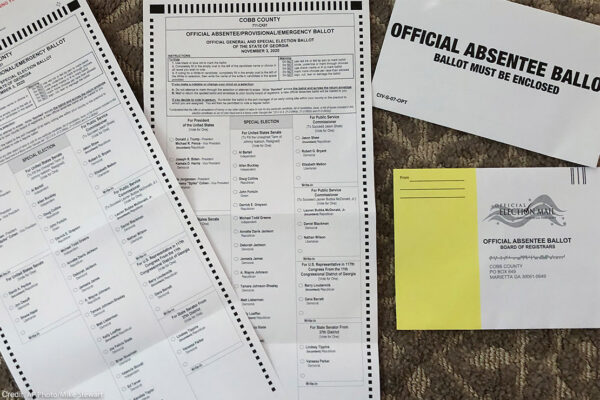Millions of people are planning to vote by mail in this election, and for most, it will be the first time. COVID-19 has made voting by mail more popular than ever because it’s the safest way for many to cast a ballot. But some voters still have questions about the safety and security of this method, and whether their mail-in ballot will be counted. Contradictory messages from President Trump add to the confusion — even though the president, and many of his cabinet members, vote by mail themselves.
All voters are able to make an informed decision on how to cast a ballot — and that means cutting through the confusion to debunk common misperceptions about vote by mail.
FACT: Mail-in ballots are secure
MYTH: Mail-in ballots are more likely to be lost or not counted
Fears of lost or uncounted ballots are not unfounded. In communities of color, this skepticism is rooted in the long history of voter suppression targeting people of color. In the South, for example, various Jim Crow voter restrictions blocked the Black vote for decades. Other communities of color, such as Indigenous people, have also experienced systemic disenfranchisement even after nominally getting the right to vote.
Other fears may be rooted in memories of the messy, contested presidential election of 2000, which led to several recounts that often centered on the question of which ballots counted, and which did not. But the vast majority of ballots that were tossed out were cast in person.
The truth is, casting a ballot by mail is a secure way to vote. The USPS delivers each ballot to the voter securely, and all states have a method for tracking who receives a mail-in ballot. In many states, the mail-in ballot envelope is stamped with a barcode to match each individual voter. Mail-in ballots leave a paper trail and the process of counting them can be audited to ensure checks and balances.
Vote by mail also helps to advance equal access to the ballot among communities of color, and the more people vote by mail, the more efficiency we’ll see at the polls for those who choose to vote in person.
FACT: Voting by mail allows for more flexibility on timing for voters with limited schedules
MYTH: Voting by mail takes more time than voting in person
Some voters may not be able to take off enough time from work to get to the polls on Election Day. Others may have children or other obligations that make it difficult to make time to vote. Voting in person can come with additional delays if there are long lines, broken machines, or changes to protocol due to COVID-19.
Casting a mail-in ballot, however, takes about as long as putting an envelope in the mail. It allows people to vote on their own time, so that nobody has to sacrifice a paycheck or other obligations to vote on Election Day.
Voter education initiatives across the country are teaching voters how easy and efficient it can be to vote by mail. Visit the ACLU’s Let People Vote tool or other educational platforms to find what your state requires, and to learn how to request a ballot, track your ballot, and mail your ballot early to meet deadlines.
FACT: Vote by mail makes it easier to cast an informed vote
MYTH: Vote by mail is confusing for voters
Ballots can include new candidates and policies, and not all voters know about them ahead of time. People who vote by mail have an advantage when it comes to casting an informed vote, because they are able to research what’s on their ballot after receiving it. Voters can look up unfamiliar names and policies, research candidates’ records, and gather any other information they need to make sure they are fully informed before marking their ballot. On the other hand, people who vote in person must do all their research before they get to the polls, because they won’t get the chance once it’s their turn in the voting booth.
Look up your candidates’ voting records using the ACLU’s candidate scorecard.
FACT: Cases of voter fraud are even rarer in absentee ballots
MYTH: Vote by mail will increase the risk of voter fraud
President Trump and other politicians have attempted to link vote by mail with unfounded claims of voter fraud in an effort to discourage or even prohibit people from voting by mail. In reality, voter fraud is almost nonexistent, and it’s even less likely to occur through voting by mail.
Whether you decide to vote differently this year or the same way you always vote, this Election Day is sure to be unlike any other. It’s already making history as COVID-19 has spurred states across the country to expand access to the ballot to allow millions of people to vote by mail for the first time. And those who choose to vote in person are bound to run into new protocols in response to COVID-19. With so many parts of this tradition changing, it’s all the more important that voters prepare themselves and plan ahead.
Visit the Let People Vote voter guide to find out your options for casting a ballot in your state, as well as state requirements to register, apply, and cast a vote.

